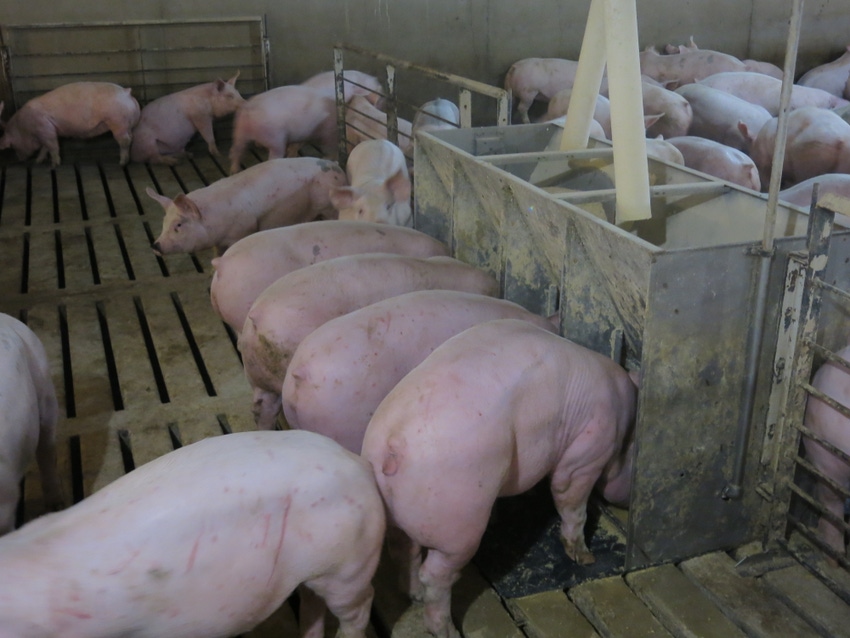Reducing feed usage and on-farm costs
Rising feed costs leading producers to cut costs.
March 30, 2021

Since the start of August 2020, ingredient and resulting feed prices have increased 20-40%, raising the per weaned pig by $3-4 and increasing the cost per market pig from wean to harvest by $20-30. Thus, pork producers have placed and will place more emphasis on feed cost, efficiency, practices, protocols, and usage. Pork producers should take advantage of feed ingredient price coverage opportunities, work with feed mills to reduce corn grind micron size and variation, further understand ingredient nutrient content and feeding value and continually review feed additive and medication programs. These items are important to reducing feed usage and costs across a pork production system and should be prioritized. This article, however, will focus on how to reduce feed usage and costs on-farm across a pork production system.
How to reduce feed usage and costs on a sow farm
Feed usage and corresponding costs can be overlooked on a sow farm, but mismanaging feed usage on sow farms can easily cost a production system millions of dollars per year. For example, with today’s current feed costs, overfeeding a pound of gestation feed per sow a day can cost a 2,500-head sow farm $7,500 per month, $90,000 per year, or $1.25 per weaned pig. Wasting a pound of lactation feed per sow a day can cost a 2,500-head sow farm an additional $2,000 per month, $24,000 per year, or 33 cents per weaned pig. Making it easy to sum that
There are two ways feed usage and corresponding feed cost increases on a sow farm: overfeeding or feed dropping into the pit. To avoid overfeeding, have protocols for feed usage that are clear, easy-to-follow, repeatable, and measurable. It is important to set the expectation of what amount of feed should be allotted to each sow and gilt and to validate if that allotment is being provided every feeding.
A key tool in determining what feed a sow or gilt should consume to maximize performance and optimize feed usage is the sow caliper developed by Dr. Mark Knauer. By using the caliper on the sow’s last rib before weaning, you can not only determine what the body condition of your herd is but also set the appropriate feed allotment for each individual sow. Post-weaning, you can group sows by caliper body condition score—thin, ideal and heavy. From wean-to-estrus, the summary of data indicates that six pounds of feed is enough to maximize total born and farrowing rate. Additionally, limit feeding versus providing feed ad libitum limits feed wastage and reduces overfeeding. This is especially true if weaned sows are not bred within the first seven days post-weaning but stay within the breeding area. Post-breeding sows are then fed an amount according to their caliper score pre-weaning.
The calipar is again used when sows are preg-checked, and feed allotment is readjusted if needed. Sows are fed to their caliper score regardless of the feeding system. Meaning if sows are group-housed, they are grouped with similarly conditioned sows to all be fed the same amount.
Prior to farrowing, pork producers can reduce feed usage, costs, and stillborn rate by feeding two pounds of lactation feed twice a day from the time they are loaded into the farrowing room until farrowing occurs.
One period to never limit feed usage is from farrowing to weaning. However, feed wastage should be closely monitored in farrowing rooms as the amount of feed delivered per sow is four times greater in lactation than in gestation.
It is also important to have protocols in place to ensure that the feed amount delivered is correct. A quarterly calibration of what feedboxes and electronic feed systems are delivering compared to the expected amount can dramatically reduce under and over-feeding sows. Additionally, it is important to calibrate feedboxes and electronic feed systems if the density of the diet changes.
One protocol that is often overlooked in older barns is when water is provided via troughs. Herdspersons need to provide at least an hour between when feed drops and when water is provided to ensure feed consumption and to avoid feed being washed over and down the trough. In some instances, water is released via automatic timers during the day while the feed is dropped manually. Thus, when farms are running behind it can easily occur that feed is dropped and then the water is automatically dispersed quickly behind it washing a portion of it into the pit.
An additional area where feed wastage occurs on a sow farm is groups of gilts or open sows housed in a pen with a standard finishing feeder. These feeders are often not adjusted or properly maintained. These feeders should be adjusted every day, the same as would be done in a finishing barn.
It is important to stay on top of maintenance of bins, motors, lines, drops, feeders and feeder adjustments to ensure that feed stays out of the pit. It is worth the time to grab a flashlight and see if feed is ending up in the pit. Feed that ends up in the pit has already been paid for but provides no return to the pork producer.
How to reduce feed usage and costs on-farm from wean-to-finish
In the summer of 2020, feed accounted for 49% of the cost of production from wean-to-harvest. In the summer of 2021, feed will account for 57% of the cost of production from wean-to-harvest and will be $20-30 more per pig than last year. An improvement of a hundredth (i.e., 2.50 to 2.49) in wean-to-finish feed efficiency (feed to gain) is worth 37 cents per pig. An improvement of a tenth (i.e., 2.50 to 2.40) in wean-to-finish feed efficiency is worth $3.70 per pig. Thus, growers and pig caretakers have heard daily about adjusting feeders.
There are multiple types of feeder designs and adjustments. Instead of coaching a standard feeder adjustment (i.e., 1 through 10) or feeder opening amount (i.e., a quarter of inch), pork production systems will be more successful in coaching a pan coverage percentage. The more feed that is available to the pig in the feeder pan the greater the feed wastage will be. However, if feeders are adjusted too tightly and pan coverage is zero (due to the feeder opening being too small or the opening has been plugged), feed intake and resulting growth will be impacted.
It makes logical sense that when input prices get high, pork production systems look for items to cut to save costs. However, mortality that occurs late in finishing can impact feed efficiency and feed costs per pig sold. Why? Because the finishing pig, at 250 lbs., has already consumed 600 lbs. feed ($80 of feed), and if not marketed, provides zero gain ($0 of revenue). Thus, timely treatment, sorting and maintaining the optimum vaccination and medication program is important to improving finishing feed usage and costs.
Like reducing feed usage on a sow farm, timely maintenance is key to reducing feed that winds up in the pit and improves feed efficiency and costs. Once again, the feed system from the bin to consumption should be leak-free and not prone to spills.
To conclude, it is important to track, project and benchmark feed usage and costs at all stages of production. Proper management of feed systems, feed allotments and feeder adjustments are key to keeping costs as low as possible in 2021.
Sources: Trey Kellner, AMVC Nutritional Services, who are solely responsible for the information provided, and wholly own the information. Informa Business Media and all its subsidiaries are not responsible for any of the content contained in this information asset.
You May Also Like


